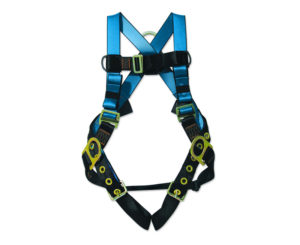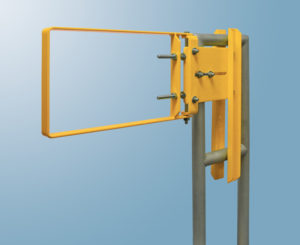
If you’re in the oil industry, you already know: America’s energy workers endure hazardous conditions every day. In fact, these are the most dangerous jobs in the nation. OSHA reports the industry has more than 450,000 employees in extraction and support — that’s a lot of people that put themselves in harm’s way to run our energy systems. What’s more, OSHA reports that oil and gas workers have the highest rate of fall-related accidents with a reported 148.9 severe injuries per 100,000 workers.
With numbers like that, it’s worthwhile to take a closer look at how industry experts can improve fall safety on oil and energy rigs and protect their employees from unnecessary harm.
Oil and Gas Industry Hazards at a Glance
According to EHS Today, the gas and oil industry saw a spike in employment in 2017 — which resulted in a rise in work-related accidents as well. Top hazards included:
- Slip, trips, and falls – 82 percent
- Hazardous energy control/lockout-tagout – 77 percent
- Confined spaces – 56 percent
- Motor vehicle-related accidents – 55 percent
- Electrical hazards – 53 percent
- Working in extreme temperatures – 50 percent
- Noise – 37 percent
- Explosions and fires – 35 percent
- Respiratory hazards due to chemical exposure – 32 percent
Fall Safety Needs to Be Top of Mind
Energy workers face incredible occupational dangers while maintaining mobile offshore drilling units and floating production facilities. These are tough, grimy, slippery, and often precarious workplaces, and frequently, workers need to scale platforms to operate and maintain equipment. The hours are long, which can contribute to exhaustion and a decrease in alertness on the job. It’s no surprise, then, that OSHA has strict standards requiring employers to install fall protection like industrial gates and utilize safety harnesses to prevent falls in these environments.
Four Occupational Hazards on Oil Rigs
Although energy workers are likely aware of the dangers they face, it’s worthwhile to make reviewing occupational risks a best practice in your workplace.
1. Ladder-Related Dangers
Ladders on oil rigs are no joke — some ascend 100 feet high. Oil, grease, precipitation, debris, and perspiration can make for a slippery situation, adding to the danger. OSHA rules state that employers must protect the health and safety of workers involved in oil and gas operations according to both the general and construction standards. Since fall protection is required at four feet for general industry and six feet for construction, it becomes evident these oil rig ladders can far surpass both.
What’s the best way to protect workers from ladder hazards? First, outfit each employee with personal fall protection equipment, like safety harnesses and lifelines, that comply with OSHA fall protection standards. Then, make sure each worker knows how to use their equipment with free and ongoing training. Furthermore, employees must use their personal fall protection system whenever climbing or descending ladders — regardless of how time-consuming it may seem.
Typical personal fall protection equipment includes:
- Anchors: These devices must sustain a 5,000-pound minimum load according to OSHA standards.
- Safety Harnesses: Derrickhands and employees working on elevated platforms should wear full-body, safety harnesses with D rings when working on oil rigs.
- Connectors: This equipment secures the body harness to an anchor point. Common connectors are self-retracting lifelines and shock-absorbing lanyards.
- Positioning & Restraint Lanyards: These devices come in varying lengths and prevent workers from even reaching the leading edge.
- Fall Arrest Lanyards & Life Lines: These stop falls by preventing the wearer from reaching the ground.
2. Walkway Issues
Walkways on oil rigs can be unstable as well. Even with railings and proper treads, trips and falls can still happen. Here’s five walkway elements to keep in mind when making your fall safety plan:
Unprotected Sides and Edges
- Open Pits
- Floor Holes
- Equipment, Materials, and Lines
- Uneven Working Surfaces
To keep everyone safe and business moving as usual, a couple of things need to happen. First, employers must make sure walkways are maintained and provide safe access. That means regular inspection of walkways, railings, and the platforms or rig floors they lead to. Second, energy workers should be encouraged to point out hazards they see on walkways as they occur. Last, if necessary, employers should consider limiting access to walkways with industrial gates and guardrails.
3. Struck-By Hazards
Falling equipment and objects are another thing to keep your eye on, from small hand tools to major machinery. (Think small tools can’t make a big impact? Think again). You can limit exposure to mistakes like these by doing the following:
- Use guardrail systems, industrial gates, and toe boards to stop objects from falling onto lower platforms. (OSHA 1910.29(b)(13)
- Use lanyards to keep equipment and tools safely secured.
- Cordon off all walkways below elevated work zones.
- Keep your lifting, rigging, and hoisting equipment in good working order.
- Use tag lines to move loads.
- Never let employees stand below suspended loads.
- Inspect equipment for disintegrated or damaged lines.
4. Worker Fatigue
Energy employees can work up to 16 hours on oil rigs. Long shifts like these contribute to fatigue, but even if shifts are shorter, the strenuous nature of the job can still leave a worker exhausted. Tired workers simply can’t maintain the same level of alertness, increasing the likelihood of human error. Remember the BP refinery explosion back in 2005? It was largely due to poor judgement and worker fatigue.
To make sure your fatigue management program is up to speed, check in with OSHA’s Worker Fatigue Facts. (And if you don’t have a fatigue management program, now’s the time to implement one).
Fall Safety Steps
Proper use of OSHA fall protection is paramount. To make sure you and your team are using your fall safety equipment correctly, have a look at the steps below.
Before Climbing the Ladder
- Put On Safety Harnesses: Workers should wear their safety harness at all times to protect them while they climb ladders or derricks. The specialized industry harness has several D-rings that provide optimal protection
- Attach the First Self-Retracting Lifeline: Each employee should use a self-retracting lifeline at the top as part of a derrick or ladder safety system as well as a rope grab system to connect the system from the ground.
- Use Certified Anchor Points: Connect each self-retracting lifeline to a certified anchor point.
Stepping onto the Platform
- Connect to the Second Self-Retracting Lifeline: Once the employee scales the platform, he/she should find the next self-retracting lifeline available to use. The employee must snap on this new lanyard immediately while they are still connected to the original self-retracting lifeline.
- Disconnect from First Lifeline: Once the second self-retracting lifeline is securely in place, the employee can disconnect from the first.
Working On The Platform
- Secure A Personal Restraint System: Use a personal restraint system to protect workers from more leverage points.
- Always Use Your Secondary Fall Arrest System: Companies should require employees to use a backup fall arrest system to reduce their risk of injuries.
- Use Certified Anchor Points: Make sure all anchor points are certified.
While the oil industry may present above average hazards, that doesn’t mean your workers can’t feel safe and secure as they perform their jobs. Having the right personal fall safety in place goes a long way in keeping your employees happy and healthy. Ensuring their worksites have the proper OSHA fall protection adds even more security. Finally, making rest and recovery a priority helps keep fatigue-related mistakes at bay. While your workers understand the risks when they show up on the job, it’s up to you to make sure they don’t get hurt.












